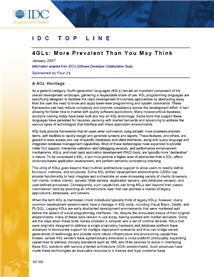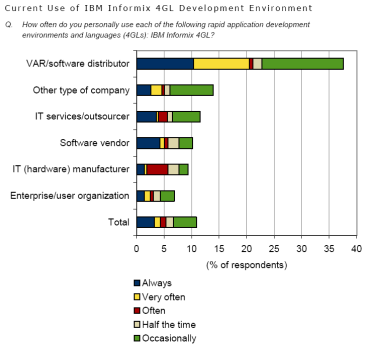New IDC Top Line report – 4GLs more prevalent than you think
Dismissed as a vestige of computing history by some, lauded as the most efficient development environment for business applications by others, this IDC “Top Line” report redresses the bar for 4GLs and provides valuable insight into the behind-the-scenes reality of many development shops.
This recent white paper adapted from IDC’s worldwide Software Developer Collaborative study of IT professionals illustrates the current commitment to IBM Informix 4GL technology.
Over 10.8% of individuals across varied company types and sizes, industries, and geographies reported using IBM Informix 4GL technology “occasionally” to “always”. Even more noteworthy is the 37.6% of respondents from value-added reseller (VAR) and other software distributor organizations that reported being engaged with this technology “occasionally” to “always” and over 20% of this segment of the respondent base reported using this technology “very often” or “always”.
With a larger than usual sample size, 3,240 responsdants representing a broad cross-section of IT managers, architects, developers, data and QA specialists responded to the study.




